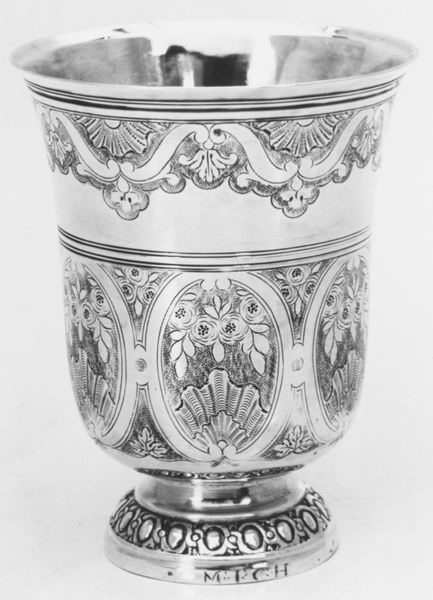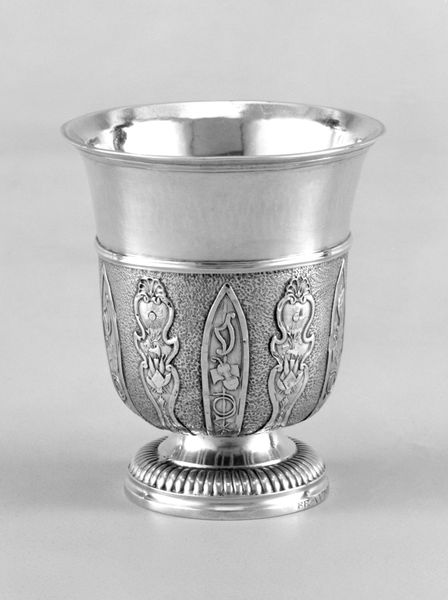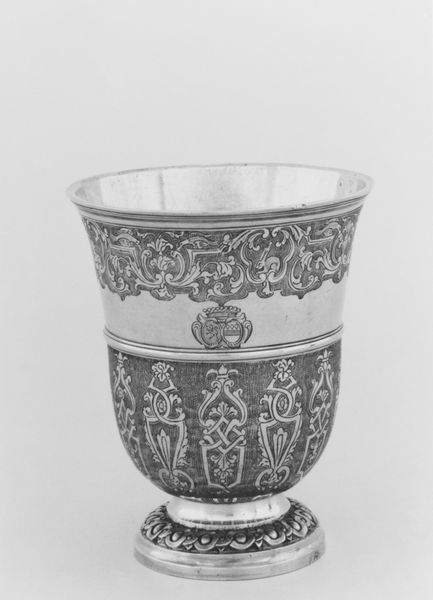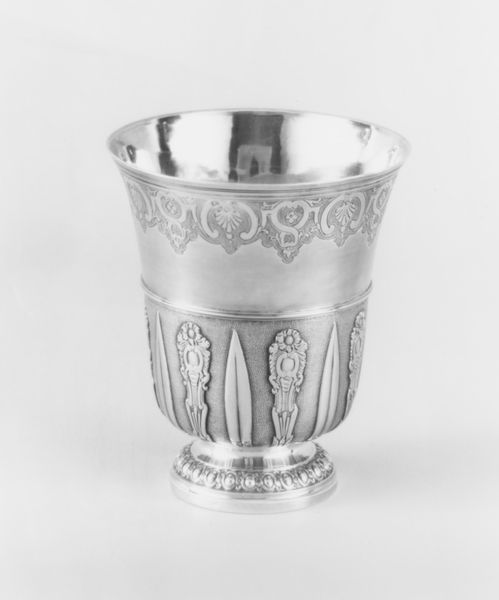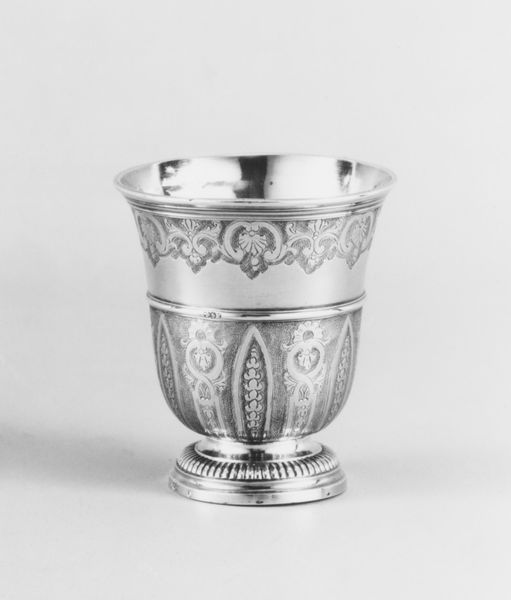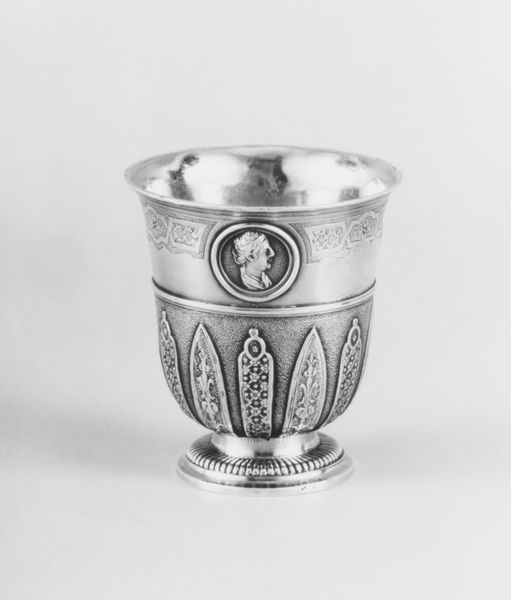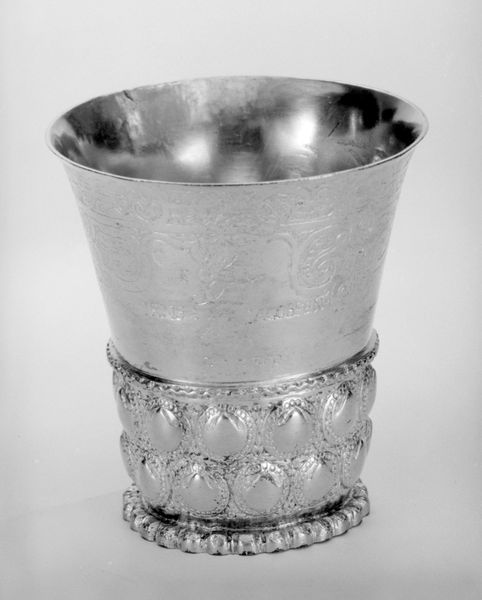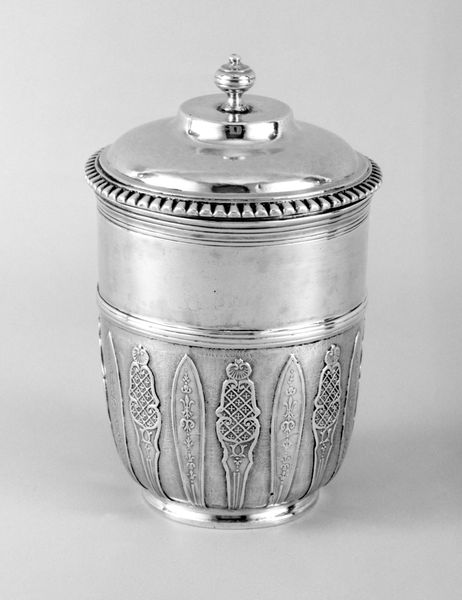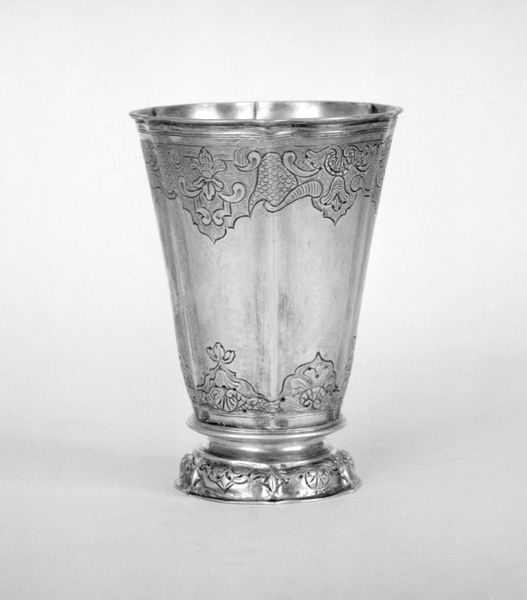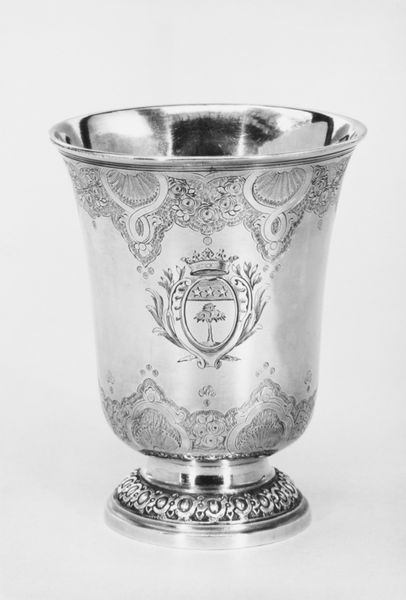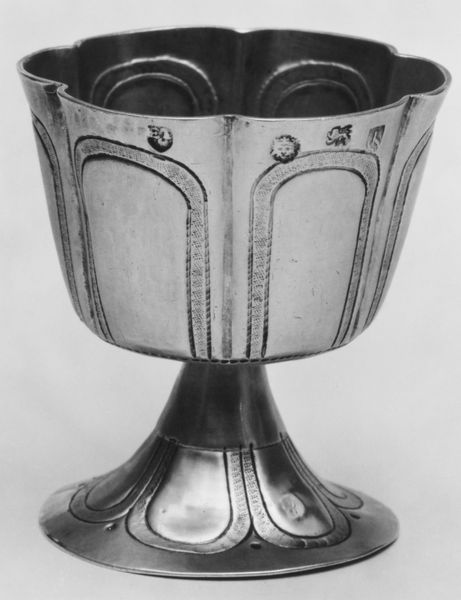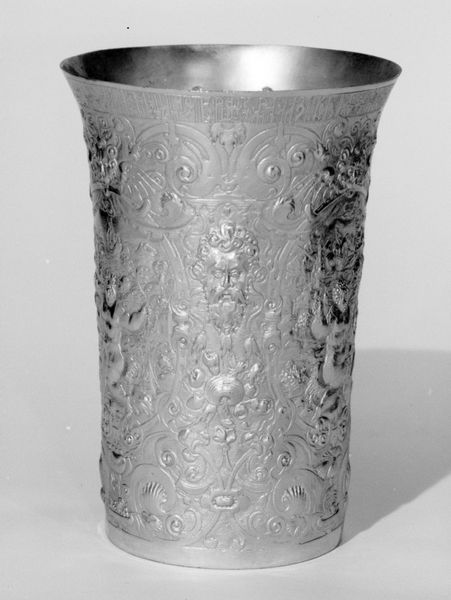
silver, metal, metalwork-silver, sculpture
#
silver
#
baroque
#
metal
#
form
#
black and white theme
#
metalwork-silver
#
stoneware
#
sculpture
#
decorative-art
Dimensions: Height: 3 7/8 in. (9.8 cm)
Copyright: Public Domain
Curator: The silver Beaker, crafted by Jean-Baptiste Brissot, likely between 1750 and 1768, demonstrates a remarkable mastery of Baroque metalwork. It’s currently held at the Metropolitan Museum of Art. Editor: The contrast is striking. The stark monochromatic sheen highlights its elegant, if severe, symmetry. It’s an exercise in controlled visual delight, although the coldness of the metal is palpable even through the photograph. Curator: Look closer. The artisan's hand is evident in the fine tooling and chasing. Silver, being a precious material, speaks volumes about status and consumption in the mid-18th century. Who would have commissioned such an item? What rituals or social functions did it serve? Its value isn’t just intrinsic but rooted in labor, trade, and aristocratic display. Editor: True, but consider how Brissot plays with form. The beaker has distinct registers. A plain upper section, then a highly ornamented frieze beneath, and that subtly decorated base—each contributes to the object's visual hierarchy. Curator: Indeed. Think about the silversmithing techniques required. Hammering, soldering, engraving - the labor is considerable. Also, understanding the social hierarchy this object implies for who might use it. Editor: Still, the decorative details. I’m captivated by the repeated motifs and the subtle textures achieved through contrasting polished and matte surfaces. Brissot, or Brisseau as he's sometimes called, created more than mere utility. He's structured an alluring form using repetition, symmetry, and a masterful use of negative space. Curator: To really engage, consider this beaker as part of a larger system of production and consumption. It symbolizes societal dynamics during the period, illustrating manufacturing expertise that defines Baroque silver works and the social meaning surrounding decorative art in the mid-1700s. Editor: Agreed! Considering these viewpoints certainly enriches my appreciation for the artist’s skillful manipulation of material and form to elevate utilitarian object into something more evocative and aesthetically interesting.
Comments
No comments
Be the first to comment and join the conversation on the ultimate creative platform.
